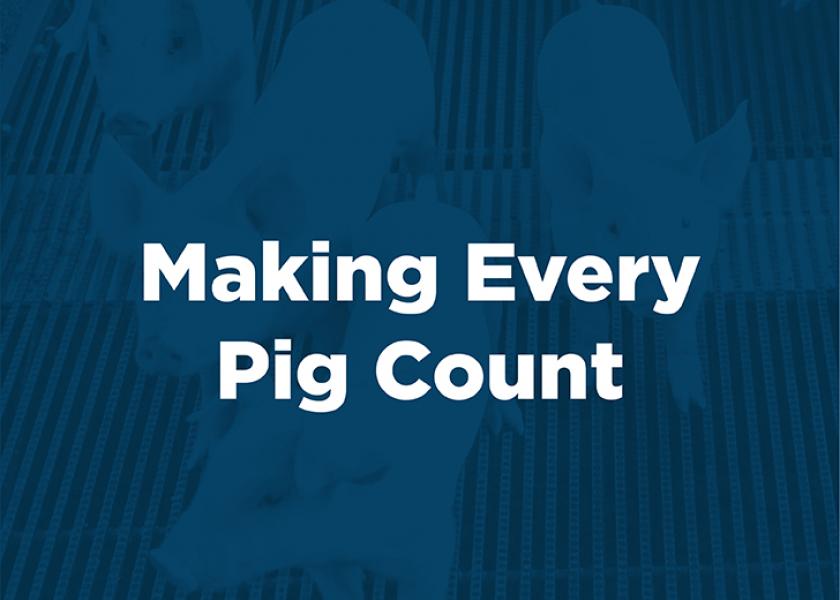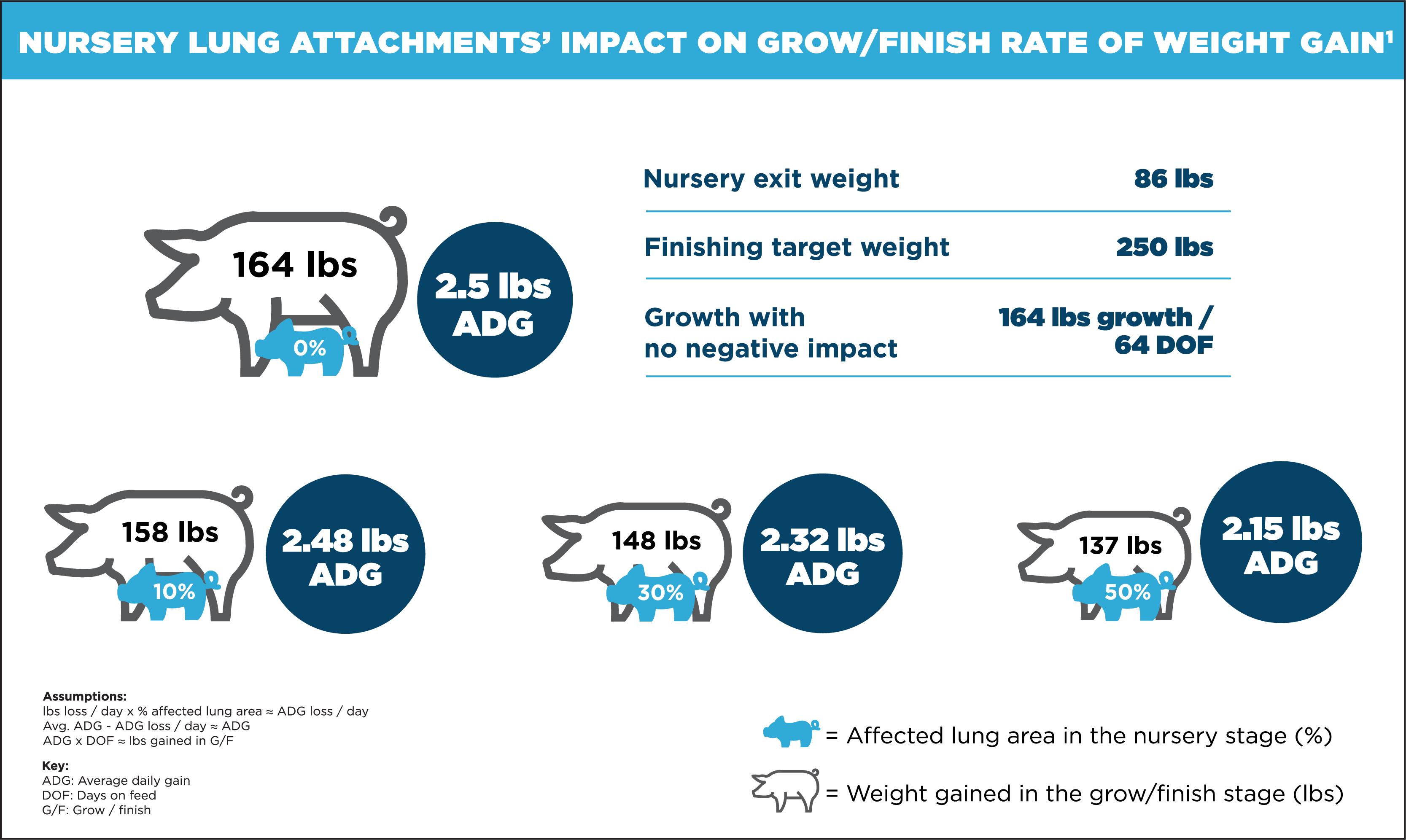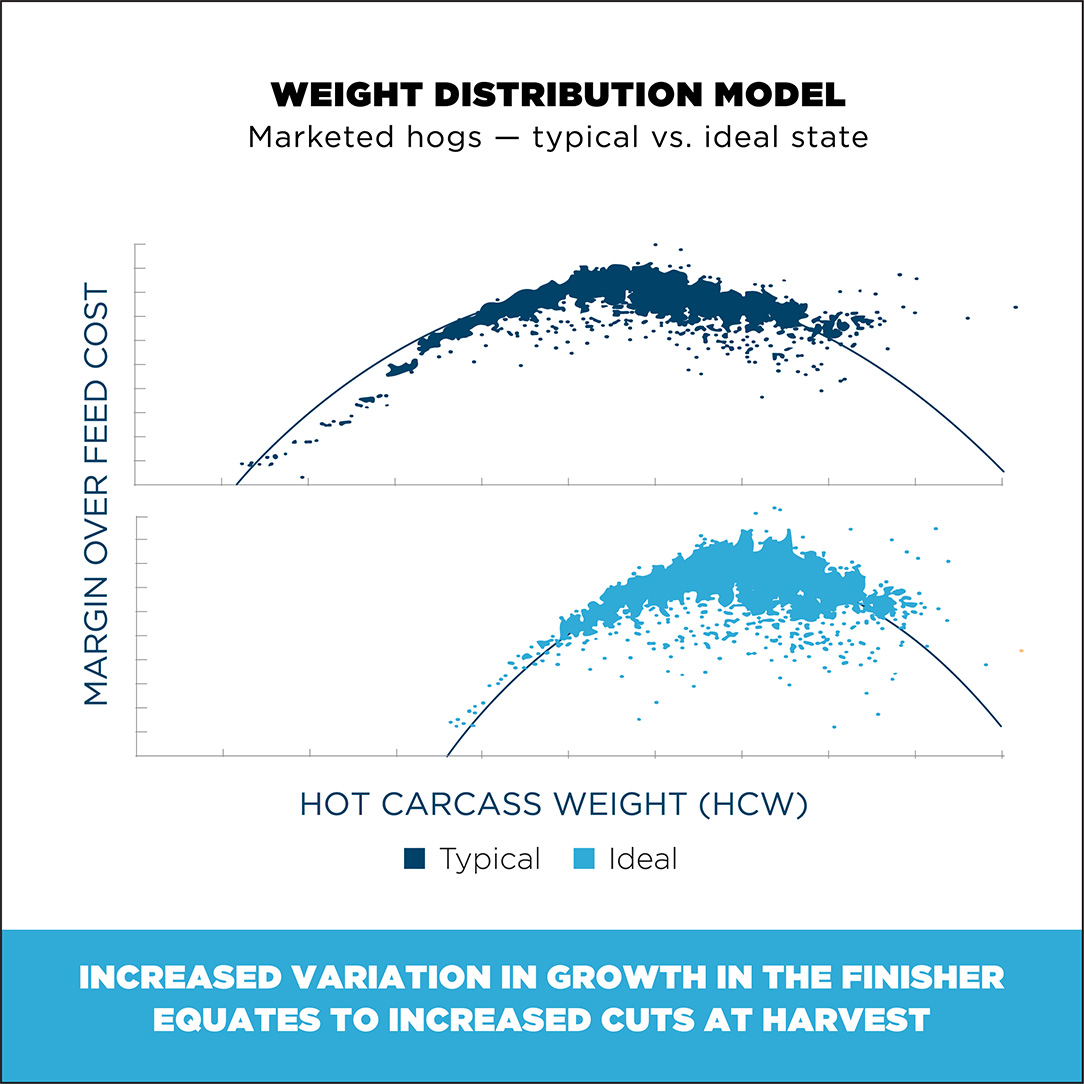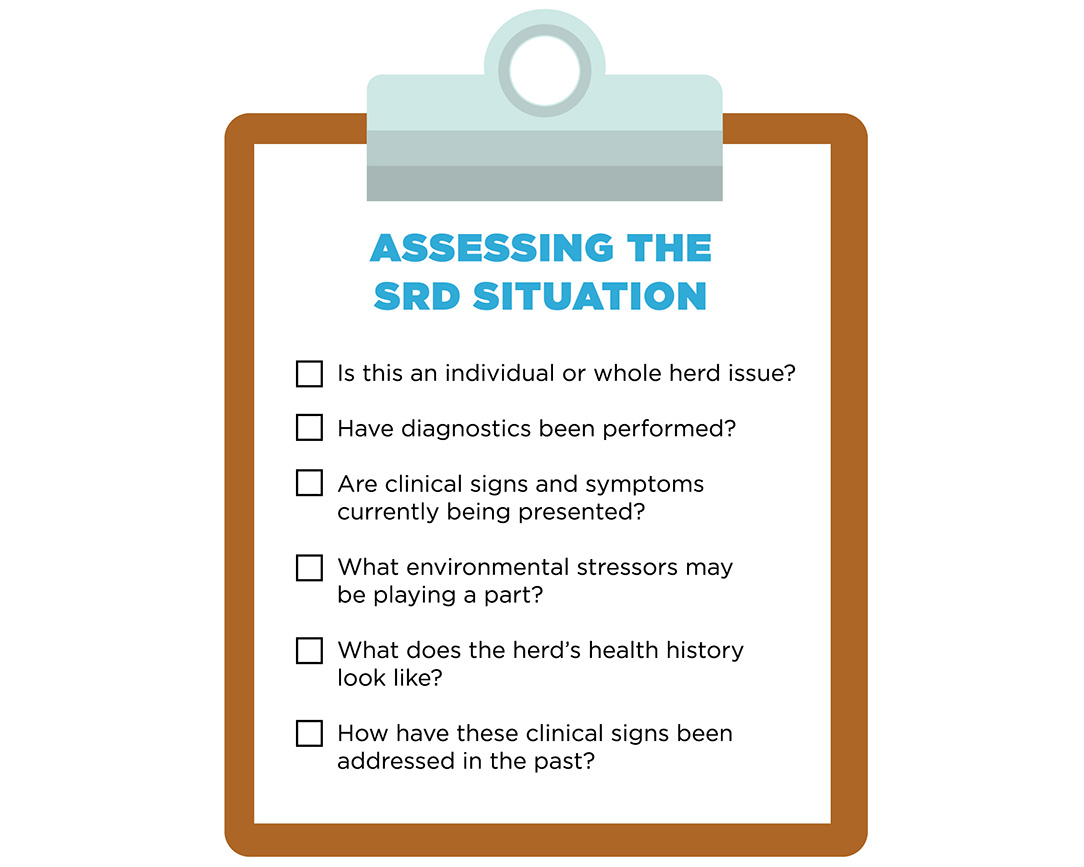Making Every Pig Count


Dr. Pat Hoffmann, DVM and technical consultant for Elanco Animal Health, recognizes the importance of a proactive approach to swine respiratory disease (SRD) to stave off resulting economic impacts.
“What we forget sometimes is that impacts early on in the nursery will flow all the way to the finisher and to the packer,” Hoffmann said. SRD is responsible for 44.2% of nursery mortalities, which equates to fewer pigs reaching finishing.1 Pigs that do survive SRD can have lasting effects on their average daily gain (ADG) and overall finishing weight.2 For every 10% of lung area affected, ADG decreases by 37.4 grams.3 Mortality loss and decreased ADG cause an economic loss for producers in the nursery through to finish.2 Attached lungs at the packer impact bottom lines as well.4
Dr. Jessica Risser, DVM and Elanco technical consultant, added, “If swine respiratory disease is not controlled or addressed early, you can actually develop some chronic lesions in those pigs and there will be more permanent fibrous attachment between the lungs and thoracic cavity.”

The true impact of SRD
“Young pigs that experience respiratory challenges may appear healthy later on, but the damage caused by the infections can lead to impacts on feed conversion, ADG, and the like, leading to more weight variation in the barn,” Dr. Risser continued. Keeping in mind that increased variation in the finisher means more necessary cuts at harvest, we can see a clear line of impact from nursery health to profitability. Dr. Risser explained, “We can see this all the way to the packer as well. [Lung lesions] will cause issues at processing due to inefficiencies at the harvest facility where they have to rail out and trim those carcasses to take the lesions out. So, it’s really important to address swine respiratory diseases early in young pigs because you don’t want those chronic lesions to develop and cause inefficiencies all the way through the system.”

SRD signs and symptoms
Hoffmann stated that, “One of the earliest objective signs of SRD that I like to watch for is a drop in 24 hour water consumption. Many times that will indicate something is wrong before clinical symptoms become apparent.” Those clinical symptoms may include lethargy, coughing, sneezing, nasal and ocular discharge, thumping, fever and reduced feed intake.
SRD in the nursery is prevalent due to the stress of weaning, transportation, and co-mingling.5 According to Hoffmann, that prevalence means we must be alert. “The first thing I want to understand are any issues with air, water and feed and get that addressed. If the pigs experience stress, they will be more susceptible to pathogens as they move through the barn.”

By staying aware of individual pig health at this stage, downstream profit of the whole herd is defended. Risser warned, “Once clinical signs are visible in one pig, irreversible damage may have already spread throughout the barn, further highlighting the importance of early response on our end.”

Selecting a solution
Even with minimal stress, some level of SRD challenge is still likely to appear. When deciding which treatment option is best, Hoffmann recommended looking at the disease situation. “In my experience as a veterinarian, I rely on differential diagnoses that match my clinical experience, the diagnostic history of the flow, and the sensitivities to the pathogens that I am addressing.”
Depending on the clinical signs, incidence rates and overall sense of urgency, first choice will be injectables for individual pig treatment and then water solubles or feed additives for whole herd treatment. “I tend to think of it as a today, tomorrow, two days or two weeks approach,” Hoffmann added. “If I need to treat today, I’ll choose an injectable, if it isn’t a high mortality, I’ll pick a longer acting injectable or I’ll look for a water solution if I want to get ahead of an outbreak. If I have more time, I’ll look at a feed solution and then even further down the line, a vaccine to prevent if the diagnostics and herd health warrant it.”

Dr. Risser agrees that there is no one-size-fits-all when considering treatment options. “It’s really a combination of a lot of different players — the prevalence of the pathogen, an evaluation of its susceptibility, and what your herd-specific goals are. With a well-thought-out strategy, you can really stop the spread, or even get completely ahead of it before it starts expressing clinically.”
A solid assessment of these herd-specific variables should be performed before heading down the treatment path. Viewing a situation through the lens of the questions above could help jump-start this process of narrowing down the right solution for your operation.

Hoffmann’s final note, “Getting ahead of a challenge and making sure you’re choosing the right treatment solution is critical. Use every resource at your disposal to get the Full Value out of every pig.”

The labels contain complete use information, including cautions and warnings.
Always read, understand and follow label and use directions.









